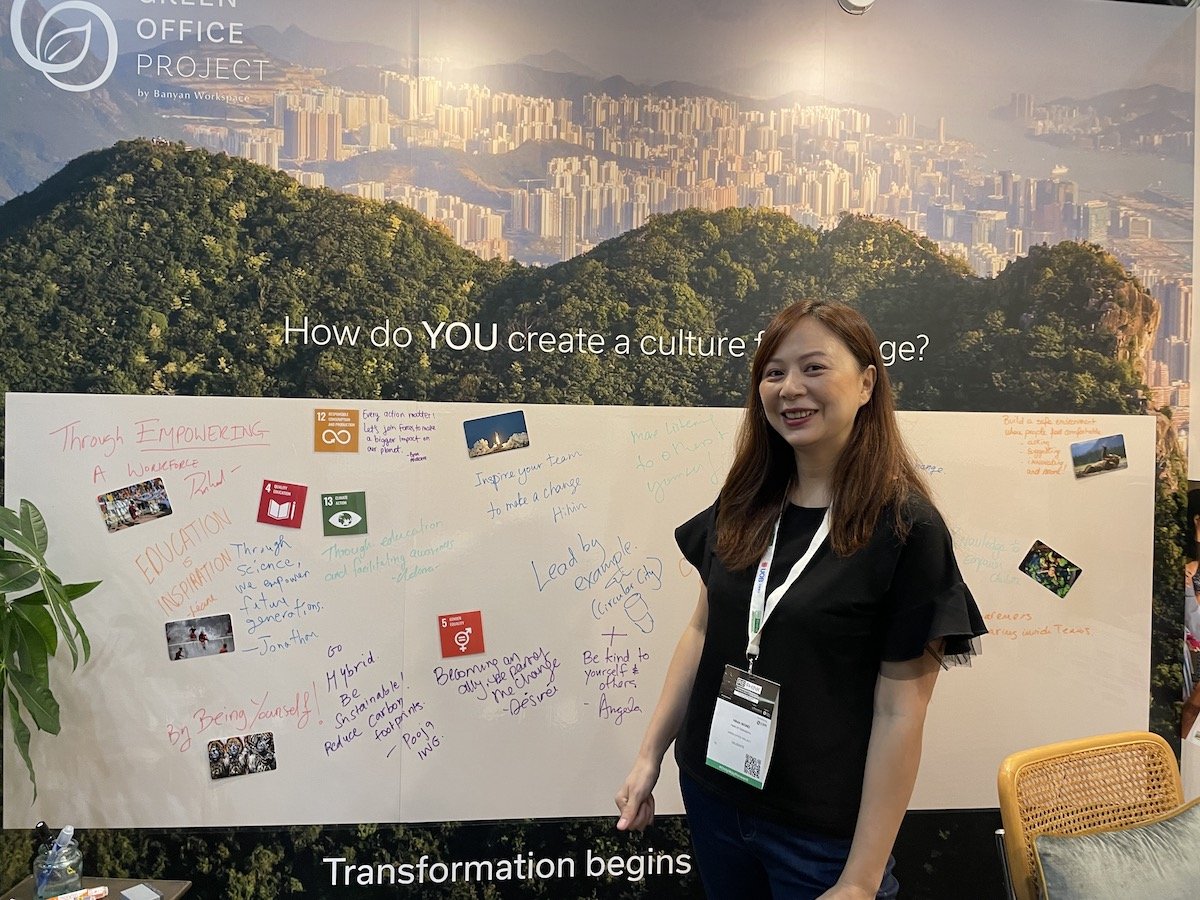How To Foster A Culture For Change: Insights from ReThink ‘23
Last week, the Green Office Project spent a meaningful two days at the Sustainable Business Forum and Solutions Expo, ReThink, in Hong Kong. Now in its third year, it attracted a larger audience than ever before, with over 6000 exhibitors and delegates coming together to learn, share and connect. While our primary focus was introducing our services to those seeking to initiate or improve environmentally conscious practices in their offices, we were equally eager to engage with other attendees and listen to their perspectives on fostering sustainability in the workplace.
We are all aware of the urgent need for environmental change in the business world, yet progress has been painfully slow. How can we transform the mindset of companies?
At our booth, we posed a simple question to visitors: “How do YOU create a culture for change?”. The responses we received were enlightening and fell into three overarching themes, which we have outlined below.
1. LEADERSHIP
Our visitors all had a clear understanding of the importance that company leadership plays in creating a new sustainable corporate culture. CEOs and senior management should “lead by example”, and “embed change in the KPIs of the organisation”. The main perceived benefit of this was not only to “inspire your team to make a change” and “achieve the goals together”, but also to “build a safe environment where people feel comfortable asking, suggesting, innovating and more”. In other words, “empowering a workforce” to make sustainable change a focus, rather than an afterthought. Environmentally-aware leadership also raises the possibility of “collaboration” and forging partnerships “to engage minds and amplify impact”.
2. LEARNING
It was also clear that many attendees felt that there was insufficient knowledge about environmental pollution and climate change, despite their prevalence in news cycles. To create a sustainable culture, one must “be open to learning and change”, because “education is inspiration”. The enormity of our environmental problems may even be something that is holding people back from change, allowing people to justify old habits and actions by claiming that they are too insignificant to make a difference. But “listen to your heart, it always knows”. “Through education and facilitating awareness” and “through science, we empower” ourselves and others.
3. ACTION
Taking action, no matter how small, was repeatedly emphasised as a crucial first step towards creating a culture for change. “Action at different (and all) levels” matters, whether the decision is to “go hybrid” or “shop secondhand”. We were surprised at the level of kindness and support that was shown for people who were making just the simplest changes. But “Every action matters!” was a typical response. What was deemed important was to “[show] the culture you want to live in” by being part of “the solution, not the problem”. We can “change the world one bit at a time”.
The sentiments expressed on our interactive wall reveal an encouraging truth: as individuals, we hold a deep-seated desire for a healthier environment. The challenge lies in transforming this desire into meaningful, long-term change at an organisational level. The three pillars of Leadership, Learning and Action identified above provide a clear roadmap for this transformation. The role of leadership in providing a framework to empower their teams, the necessity of learning to inspire and inform, and the power of action to effect concrete change, are all critical components of this journey.
The most exciting realisation from the insights shared with us at ReThink is that each of us have a role to play in this process. Whether we are CEOs, employers, educators or simply conscious citizens, we all have the capacity to become agents of change. By fostering an environment where individuals feel empowered and encouraged to contribute to the sustainability cause, organisations can shape the future of our planet.
It is no longer a question of “How do YOU create a culture for change?” but rather, “How do WE create a culture for change?”




















